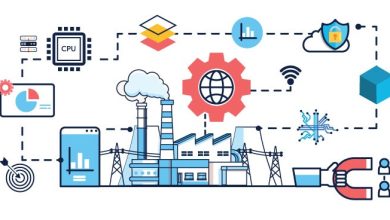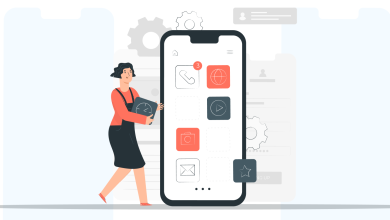8 Best Java Frameworks You Should Know in 2022

Java is one of the most widely used programming languages. It is the preferred language for cutting-edge software development employment. It offers large-scale benefits to projects spanning from web and android development to cloud computing, big data, and machine learning. The main benefit of Java is that it is a platform-independent language that adheres to the object-oriented programming paradigm and is simple to comprehend, create, and debug.
Since the language has been used for so long, it might be referred to as an experienced programming language. Programmers don’t need to learn how to code from scratch because of its maturity and versatility. Furthermore, Java frameworks are available to simplify the process.
In this article, we’ll discuss the top Java frameworks that would be wise to learn in 2022.
So let’s begin!
1. Spring
Spring Framework is one of the most widely used, high-quality, lightweight software application frameworks, which was developed by the Pivotal Software firm in 2002. It is mostly used to create enterprise-level applications, web services, and microservices. It is designed for Java software design, development, and deployment. This compact Java framework also provides several extensions that can be applied to the development of software.
The technology is used by well-known companies including Google, Netflix, and Microsoft. The Spring framework is improved with add-ons like Spring MVC and Spring Boot. Additionally, the Java Spring framework is the best option for processing real-time data because it has excellent documentation and large, active community support.
Java Spring Framework Features
- Bolster relational databases
- Robust library with APIs
- Application events and listeners
- Administrative features
- Backward adaptability
- YAML Support
- Type-safe Configuration
- Properties Files
Advantages
- High-security support
- Highly stable
- loose coupling
- Seamless testing
- Extensive documentation
- Active Community
2. JHipster
JHipster is a Java platform with an emphasis on generating, deploying, and developing online apps using technologies like Spring Boot, Vue, Angular, React, and others. It is utilized by renowned companies including Adobe, Siemens, Bosch, HBO, and Google. Modern Java-based web apps and microservices can be swiftly created using JHipster.
Furthermore, it is best to learn the fundamentals of these libraries because JHipster writes a lot of code using several libraries that may be unfamiliar to you. The frameworks also make it possible to create fully functional Java projects with all the bells and whistles without jeopardizing the project’s security.
Features
- In-built management features
- Comprehensive documentation
- Multiple deployment options
Advantages
- Speeds up development
- Support for many frontend frameworks and technologies
- Mobile app development
- Built on top of Spring Boot
- Active community
3. Hibernate
Hibernate is one of the most effective frameworks for extending Java’s Persistence API support. Hibernates is an open-source, incredibly lightweight, performance-focused ORM (Object-Relational-Mapping) technology. Hibernate’s query language is known as HQL. It provides consistent Java and RDBMS communication as a strong object-relational mapping framework. It offers a framework that fixes Java mismatch problems and seeks to increase the system’s endurance
The primary Hibernate file is hibernate.cfg.xml. It includes details on how Java classes are mapped to database configuration. Hibernate was utilized extensively by many software companies, including IBM, Dell, Oracle, and others.
Features
- ORM solution
- Seamless UX
- High Performance
- Data independent query
- HQL (Hibernate Query Language)
- Caching
- Auto-Generation
Advantages
- Open-source
- Lightweight
- Portable, scalable, configurable, modifiable, and highly productive
- Rapid development
- Hibernates reduces redundancy via JDBC API
- Persistence APIs support
- Multiple fetching strategies support automatic versioning
- Timestamping
4. Java Server Faces (JSF)
Oracle developed this open-source Java spring framework in 2004. Component-based user interfaces for web-based applications can be built using the Java Server Faces framework. The Java Community Process, which is a component of the Java Platform, Enterprise Edition, helped to formally establish it as a standard.
JSF is an MVC-based component UI framework that enables developers to easily drag and drop user interface elements without having a thorough knowledge of any technology, such as JavaScript, etc. By enabling the extension of existing backend Java code with a web interface, it reduces the requirement to introduce a new framework. JSF’s Facelets templating mechanism enables integration with AJAX-capable elements.
Features
- API representing components
- Rich library support
- Reusable UI Components
- Robust validation process
- Well-defined programming
Advantages
- Robust community support
- Developed and maintained by Oracle
- Well-organized documentation
5. Dropwizard
Dropwizard, one of the simplest and smallest Java frameworks, helps programmers create Java apps quickly and easily thanks to its out-of-the-box support for sophisticated setups, logging, application metrics, and other features. This Java framework provides programmers access to RESTful web services that are operation-friendly, as well as efficient application bootstrapping.
The Dropwizard framework combines several well-known Java modules to give you a quick and distraction-free development environment. Along with many other well-known Java libraries, it includes an inbuilt Jetty server, Google Guava, Logback, Hibernate Validator, and Joda Time. It includes a built-in Jetty server along with Google Guava, Logback, Hibernates Validator, Joda Time, Jersey, Jackson, Metrics, and many other well-known Java libraries.
Features
- Metrics library support
- Hibernate validator API
- Quick project bootstrap
- High-performance
- RESTful web
Advantages
- Easy setup
- Lightweight
- Rapid prototyping
- Independent libraries
- Excellent conventions
- Scalable
- Comprehensive documentation
6. Google Web Toolkit (GWT)
For building front-end Java-based apps, this Google-invented programming language provides an open-source, totally free framework. With the help of this and other widely used Java frameworks, programmers may create highly efficient, high-performance, complex web apps.
Both client-side and server-side application projects can be developed with the aid of this Java framework. GWT does not degrade the application’s quality while making it simpler for developers to build and optimize the entire development process.
Features
- Internationalization
- Cross-browser portability
- UI abstraction
- RPC Mechanism
- Bookmarking
- Extended widget library
- History management
- Unit Testing Integration
Advantages
- Handles browser compatibility
- Easy to use
- Integrated debugging functionality
- High-quality application
- Code optimization
- Flat learning curve
7. Grails
Grails is an automation testing framework that makes use of the Apache Groovy programming language and is based on the MVC architecture pattern. Despite using the Groovy programming language, Grail is completely compatible with Java syntax and performs admirably with the Java Development service Kit, Java EE containers, Spring, and other technologies. It is a full-stack framework with integrated RESTful API support.
The framework additionally facilitates the intensive java app development process without the need for any setups. Additionally, with its specialized plugins and cross-platform support, it is advantageous to programmers as well.
Features
- Seamless Java integration
- Optimized reloading agent
- groovy language,
- Built-in testing tools
- Spring Boot Foundation
- Plugin library
- Pragmatic strategy
Advantages
- Provides an Object-Mapping Feature to make programming easier
- Code reusability
- Skilled web developer of eCommerce sites
- Superficial documentation
- Customized plugins and cross-platform IDE support
8. Play
This open source, lightweight Java framework for web development was created in 2017, and it has established a strong place in the market. This framework was created in the Scala programming language and is based on the MVC architecture. It is one of the most widely used Java frameworks for developing mobile applications as well as websites since it is compiled to Java-Bytecode. Play is therefore frequently used by Java and Scala programmers to create web apps.
Features
- Hit refresh workflow
- Code reloading
- Powerful console & build tools
- Convention over configuration
- Built-in testing tools
- IDE support for Eclipse and IntelliJ IDEA
Advantages
- Highly flexible and fault-tolerant
- Asynchronous core
- Non-blocking support
- Input-output operations
- Develop high-performance apps
- Hot Coding support
- Capable of providing error messages
- Increase productivity
- Extensive documentation and active community
Conclusion
The Top Java Frameworks listed above can be us for a variety of purposes and development areas. You should be aware of these frameworks and make use of them for your particular custom Java development company‘s requirements. Be sure to comprehend the requirements for your project consider the possibilities and then select the ideal Java framework to meet your project requirements.





